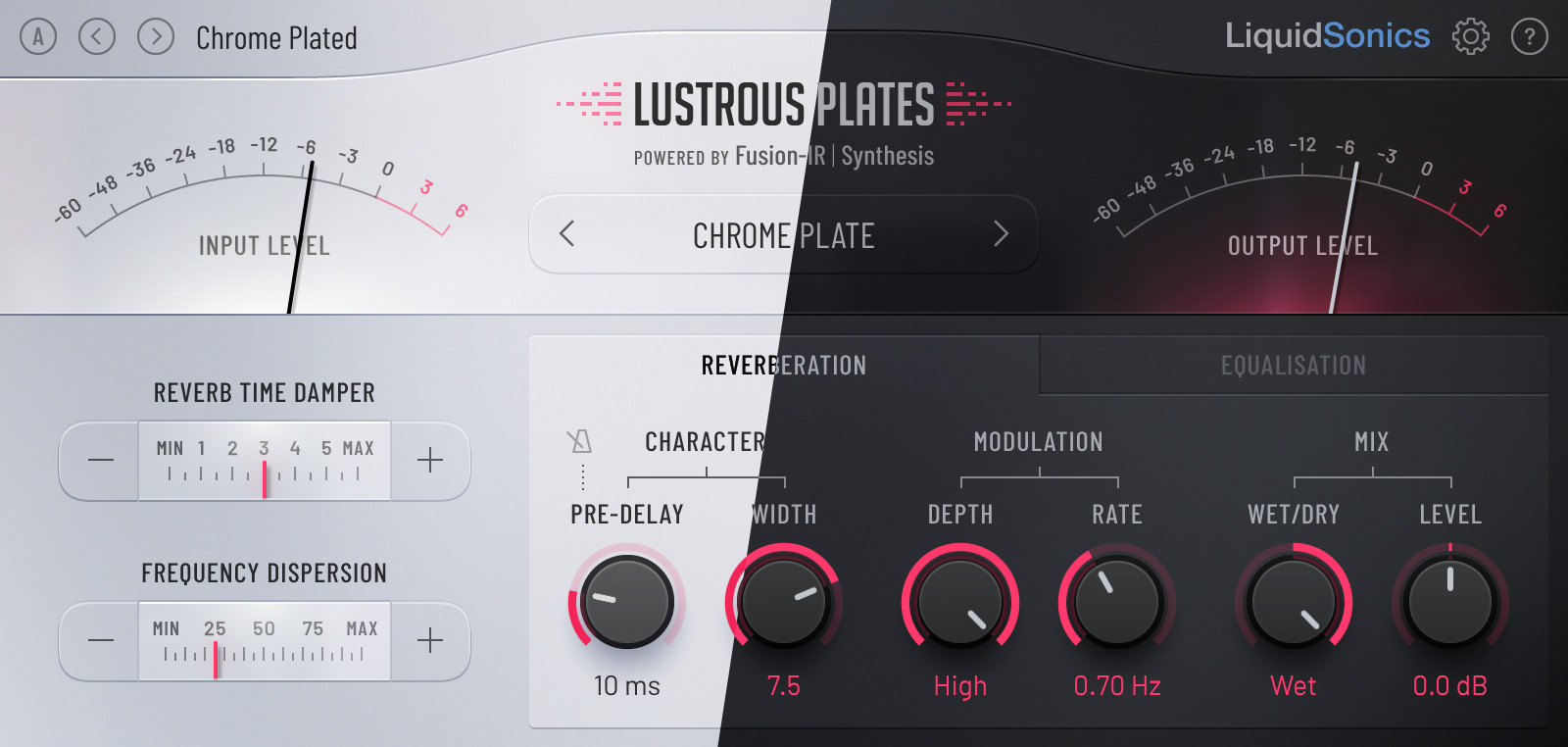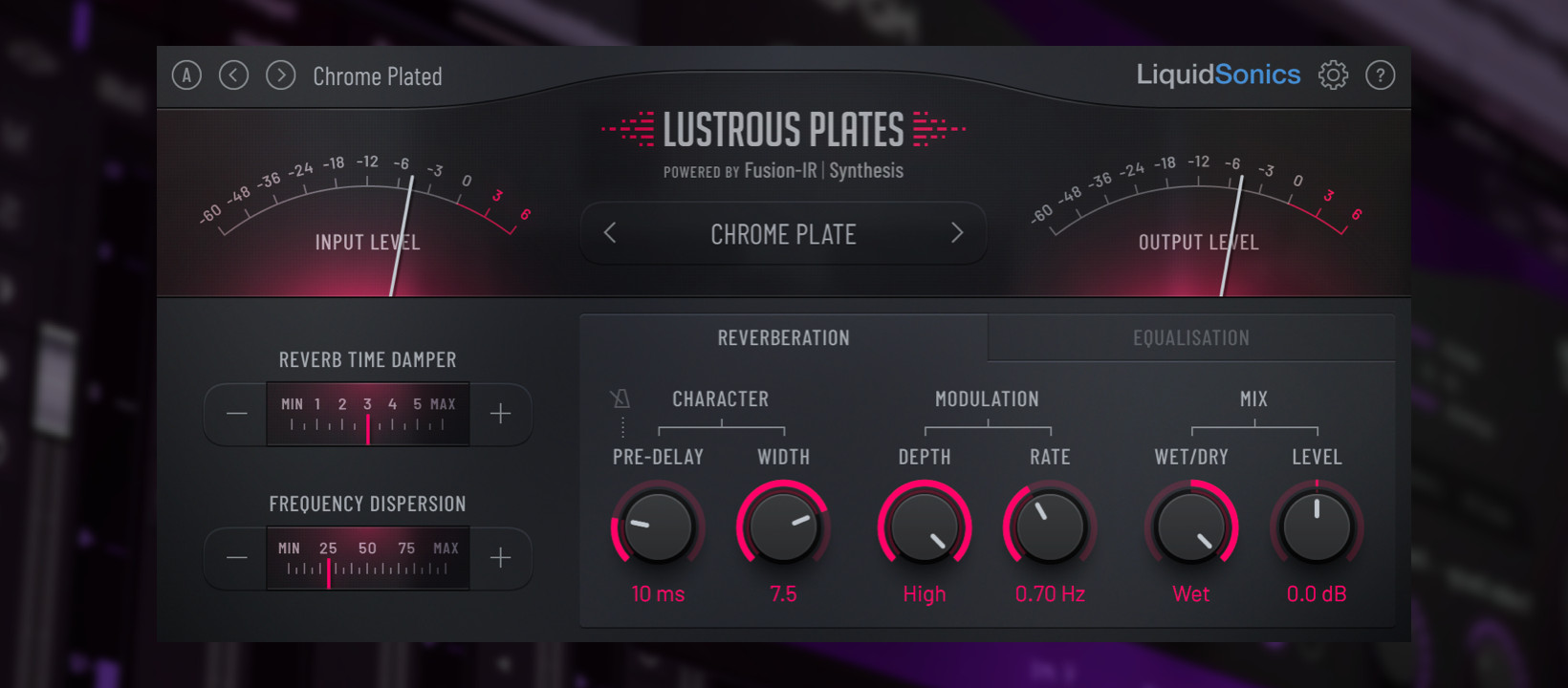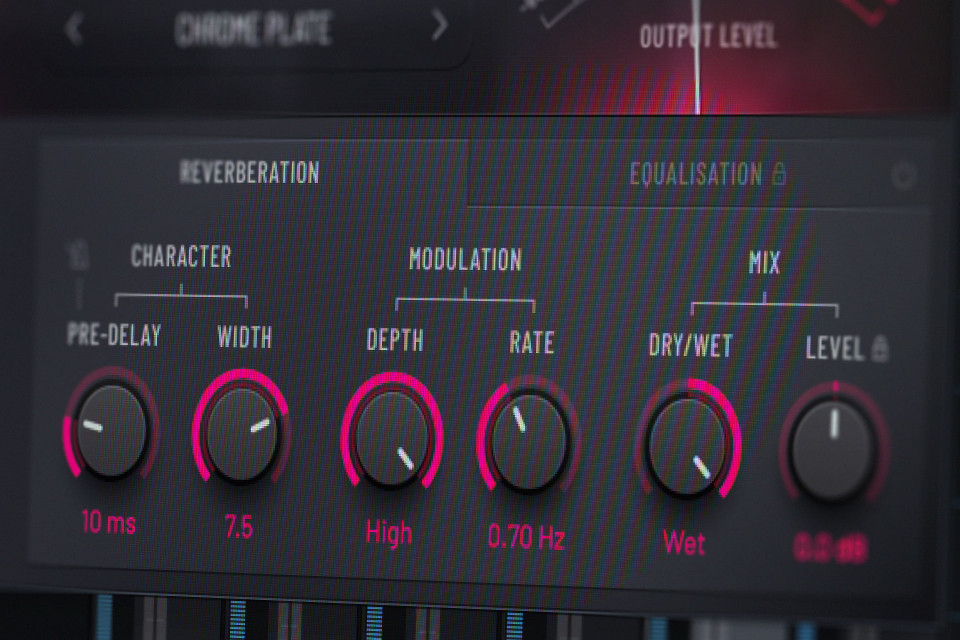









Powered by Fusion-IR | Synthesis
Lustrous Plates is a rich and luxurious contemporary plate
design with ten distinctive models.
Temporal Acoustic Spectral Mapping (TASM) uses a proprietary multi band dynamic capture and analysis method
which allows an unprecedented frequency specific profiling of each plate’s natural decay,
which is then mapped into an advanced reverb synthesis algorithm.
This not only reproduces the even diffusion and beautiful spectral decay of real hardware plates,
but it also gains the benefit of having classic algorithmic reverb parameters
which allow fine tuning in ways that you’ve never been able to with any other plate emulation
including precise control of frequency dispersion, width and modulation.
Ten Rich and Beautiful Plates
Each of ten models was designed following extensive measurements taken from real plates,
so all have a distinctive and very realistic reverberant tone to them.

Chrome: A rich, full bodied plate with a classic plate multi-band decay profile
Silver: A light, airy plate with de-emphasised low-mids for enhanced clarity
Steel: Similar in nature to the chrome plate with a reduced low band decay time
Rhodium: Bright and rich, with a very neutral decay profile
Beryllium: A very reflective, lustrous metal inspiring a plate with a bright tone
Corbomite: A very dense and heavy plate
Iridium: Very dense, with a highly emphasised low decay profile
Osmium: A rich reverb capable of very clean, short ambiences
Platinum: Very dense and bright, with rich lows on longer decays
Gold: Simulation of the rare ‘gold foil’ compact plate reverberator
Precisely Modelled
The dispersion of frequencies within a plate reverb plays a critical role in its sound.
It is a major reason why a plate reverb sounds so distinctive,
in particular with respect to the way it affects transients.
A plate’s whip like onset is especially audible with percussive material,
and is very well suited to guitars and vocals bestowing a unique and very desirable acoustic signature to the reverb.

This happens because sound travels through a metal plate at different speeds depending on its frequency.
Similar in effect to a prism spatially splitting light into different colours,
a plate temporally disperses sound by delaying different frequencies by different amounts.
Low frequencies travel relatively slowly through the metal
so are delayed more than the high frequencies.
Simulating the delay’s rate of change with frequency is crucial to achieving a convincing plate dispersion tone.
In a real plate dispersion is largely determined by its dimensions and pick-up positions,
but other factors including the construction material, tension, mounting factors and so on all make a difference.
The amount of simulated dispersion for each plate in Lustrous Plates is all controllable via a single ‘frequency dispersion’ parameter
for quick and powerful results.

With Precision Control
Dynamics
Lustrous Plates features a dynamics module
which includes a ducker, gate and compessor.
Rhythmic Reverberation
The pre-delay of the reverb can be set in milliseconds,
or click the metronome button to set it relative to the current project tempo
to sync the reverb to the beat of the song.

A Unique Width Control
The sense of space generated by Lustrous Plates is controlled as much by its width as by its length,
and can be set from mono right up to a fully decorrelated true stereo spaces
(without phase or mono-compatibility concerns)
giving a high degree of control over how the reverb sits within the mix.
Modulated Reverb
Lustrous Plate’s Fusion-IR Synthesis engine is capable of fully modulating its reverb in a very natural, organic manner
for rich and lively plate reverb.
It can also be completely disabled to model the rigid plates found in nature.